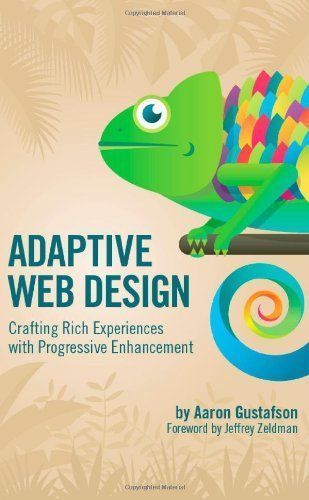
Adaptive Web Design Crafting Rich Experiences with Progressive Enhancement
The concept of "progressive enhancement" (strategy for webdesign with emphasis on accesibility) is explained while using HTML, CSS and Javascript. The accompanying website gives a download of the first chapter for free.
Reviews
Radimir Bitsov@radibit
Nick Simson@nsmsn
Michael Hessling@cherrypj
Nick Simson@nsmsn
Jon Dubielzyk@dubielzyk
Joshua Line@fictionjunky
Kevin S Perrine@kevinsperrine
G. Jason Head@gjhead
Damian Bannon@damianb